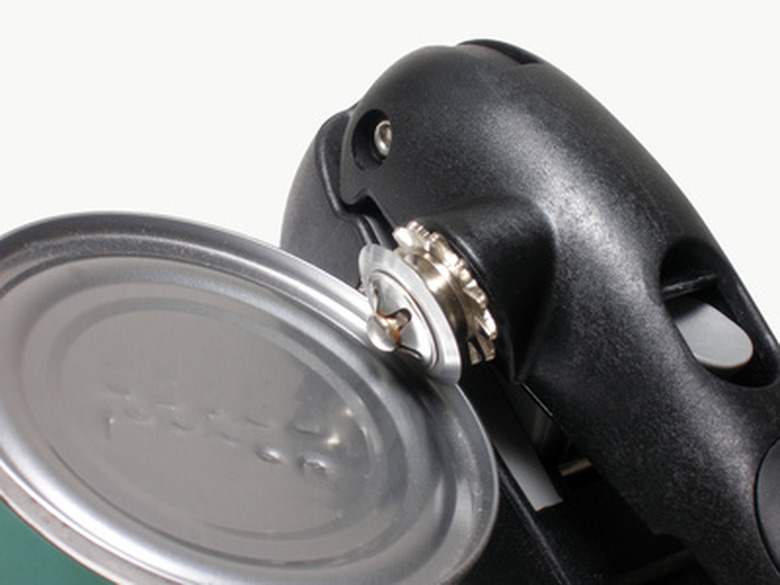Parts Of A Can Opener
Whether electric or manual, mechanical can openers consist of the same critical operational parts. The basic parts hold the can steady—whether by hand or with a mounted or built-in base–and cut the can open, which makes accessing the contents of metal cans much easier. The first can opener, which punctured the can's metal top, was designed in 1858. The device we all know today with a round knife was invented in 1870 and allows for a continuously smooth edge on the lid; nearly 60 years later, the first electric can opener was invented.
Base or Handle
Base or Handle
In manual, hand-held can openers, the handle allows the operator to keep the can steady with one hand by squeezing the handles together, so that the other hand can operate the crank. In mounted can openers, usually screwed into a countertop or wall-mounted, the base keeps the can steady and, in electric can openers, the built-in base helps maintain can position during opening.
Crank
Crank
Whether electric or manual, the crank operates the gear. Some wall- and counter-mounted can openers have an adjustable crank shaft to accommodate different sized cans.
Circular Knife or Blade
Circular Knife or Blade
A round blade is used to pierce the metal and open the can in manual and electric can openers.
Knife Holder
Knife Holder
The circular knife is held in place with a small metal dowel-like part and aligns the knife with the operational gear.
Gear or Feed Gear
Gear or Feed Gear
A small gear moves the circular knife in both types of can openers. The gear is connected to an electric crank or by a manual crank, which is maneuvered by the operator.
Motor
Motor
In electric can openers, the motor operates the gear, crank and rotary knife.
Lid Magnet
Lid Magnet
In electric can openers, a magnet helps position the can during opening and holds onto the metal lid once it is removed from the can.
